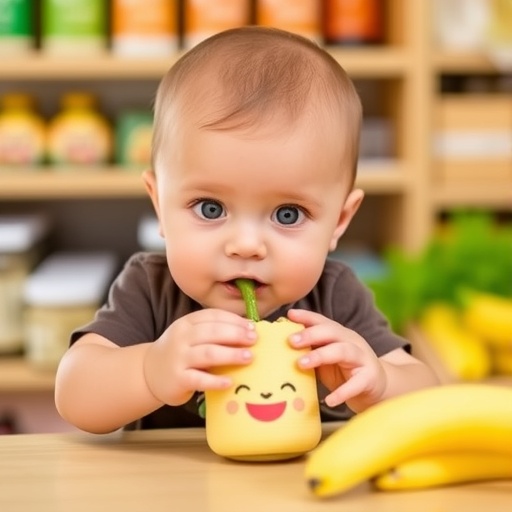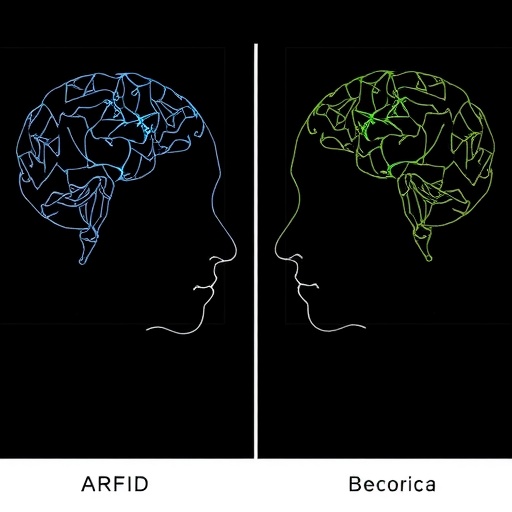In the complex world of infant and toddler nutrition, the packaging of commercial baby foods is emerging as a battleground for parental trust and industry marketing tactics. A groundbreaking study led by researchers at the University of Auckland reveals an overwhelming proliferation of health, nutrition, and marketing claims on baby food packaging in New Zealand—claims that often misrepresent the true content and nutritional value of these products. This investigation provides a critical lens into how processed foods, particularly those intended for the most vulnerable consumers, are promoted with a blend of imagery and language that can easily mislead caregivers.
The research, published in the journal Nutrition and Dietetics, meticulously analyzed over 200 varieties of processed infant and toddler foods, uncovering that every package examined was saturated with multiple health-related and marketing assertions. These claims, averaging 7.5 per product and ranging up to 15 in some cases, predominantly fall into categories such as “free from” additives and preservatives or marketing slogans designed to appeal to busy parents seeking convenient meal options. However, the study’s detailed ingredient analysis often found these claims to be unsupported by the actual composition of the products, casting doubt on their credibility.
One of the most striking findings centered around the use of fruit and vegetable imagery on packaging. Approximately 60 percent of the products displayed pictures of fruit, and 40 percent showed vegetables, yet many contained only trace amounts of these wholesome ingredients. In some products, such as snacks labeled with “purple carrot,” the actual vegetable content was negligible or entirely absent, demonstrating a disparity between packaging design and product reality. This discordance raises important questions about the ethics and regulations surrounding visual representation in food marketing aimed at children.
The implications of these findings extend beyond mere packaging aesthetics. The study reveals a systematic use of what can be described as ‘health halo’ marketing tactics—strategies where certain words or images evoke healthfulness without basis in the food’s nutritional profile. This phenomenon complicates caregivers’ efforts to make informed dietary choices for their children, a concern underscored by Dr. Sally Mackay, a senior lecturer in population nutrition at the University of Auckland. Mackay emphasizes that the barrage of claims creates a confusing landscape where discerning useful information from marketing noise becomes extraordinarily challenging for parents and guardians.
Additionally, the study highlights the misalignment between product names and their actual composition. For instance, more than half of the savory meals bore titles suggesting a high content of desirable nutrients like protein or iron, usually implied by the presence of meat in the name. However, many of these products contained as little as 10 percent meat, with vegetables dominating the ingredient list. This misleading innuendo can give parents false assumptions about their child’s nutrient intake, further compounding concerns about transparency in infant food marketing.
The problem is not unique to New Zealand. Comparable research in Australia disclosed that only about a quarter of commercially available baby and toddler foods adhered to World Health Organization (WHO) nutritional guidelines. Yet, similar to the New Zealand context, these products continued to feature health claims that misrepresent their wholesomeness. The parallel findings from these neighboring countries indicate a broader regional issue that calls for concerted regulatory attention.
Food Standards Australia New Zealand (FSANZ) is currently reviewing regulations concerning the marketing claims on infant and toddler foods, with the research team openly supporting stricter controls. They advocate for the cessation of ambiguous and potentially misleading claims, urging instead for the prominence of simple, factual, and standardized nutritional information on packaging. Such measures would empower parents with accurate data necessary to make choices aligned with the best interests of their children’s health.
The use of fruit and vegetable images as a marketing tool leverages psychological effects known to influence consumer perception. Studies indicate that visual cues of natural, wholesome ingredients enhance the perceived healthiness of a product, often regardless of the actual nutritional content. This form of cognitive bias can lead to overestimation of the product’s benefits and underestimation of potentially detrimental factors, such as processed sugars or additives.
The research underscores the necessity for restricting the application of such imagery strictly to products where whole fruits and vegetables constitute a substantial portion of the ingredients. This would prevent the exploitation of parental goodwill and help restore integrity in infant food marketing. The study’s authors argue that without these regulatory safeguards, parents will continue to face confusion and potentially make less optimal dietary decisions for their children.
In conclusion, this comprehensive analysis sheds critical light on the murky intersection of marketing and nutrition in the sector of infant and toddler foods. By revealing how packaging strategies can distort reality, the study challenges policymakers, industry stakeholders, and consumer advocates to rethink and reform labeling practices. Such reforms are essential not only for public health but also for upholding the ethical obligation companies hold towards the youngest and most vulnerable consumers.
As this research emerges amid growing global attention to early childhood nutrition and obesity prevention, it contributes valuable data and insights. The findings serve as a clarion call for both heightened scrutiny and decisive action to ensure that the marketing of infant and toddler foods reflects true nutritional value rather than promotional hyperbole.
Ensuring that parents have access to clear, accurate, and honest information is fundamental to fostering healthy eating habits from an early age. Ultimately, the work by the University of Auckland research team paves the way toward greater transparency and trust in the infant food sector—an essential step in promoting optimal nutrition and development during critical growth periods.
Subject of Research: People
Article Title: Cluttered with claims: Composition, nutrition, health and marketing claims on commercial infant and toddler foods in New Zealand
News Publication Date: 26-Aug-2025
Web References: http://dx.doi.org/10.1111/1747-0080.70042
References: Nutrition and Dietetics journal article, University of Auckland study
Keywords: Health and medicine, Human health
Tags: baby food marketing claimscaregiver awareness of baby foodcommercial baby food industryconsumer trust in baby foodhealth claims in baby foodinfant nutrition studiesmisleading baby food packagingnutrition and dietetics researchnutritional value of baby foodsprocessed baby food analysistoddler food safety concernsUniversity of Auckland research





